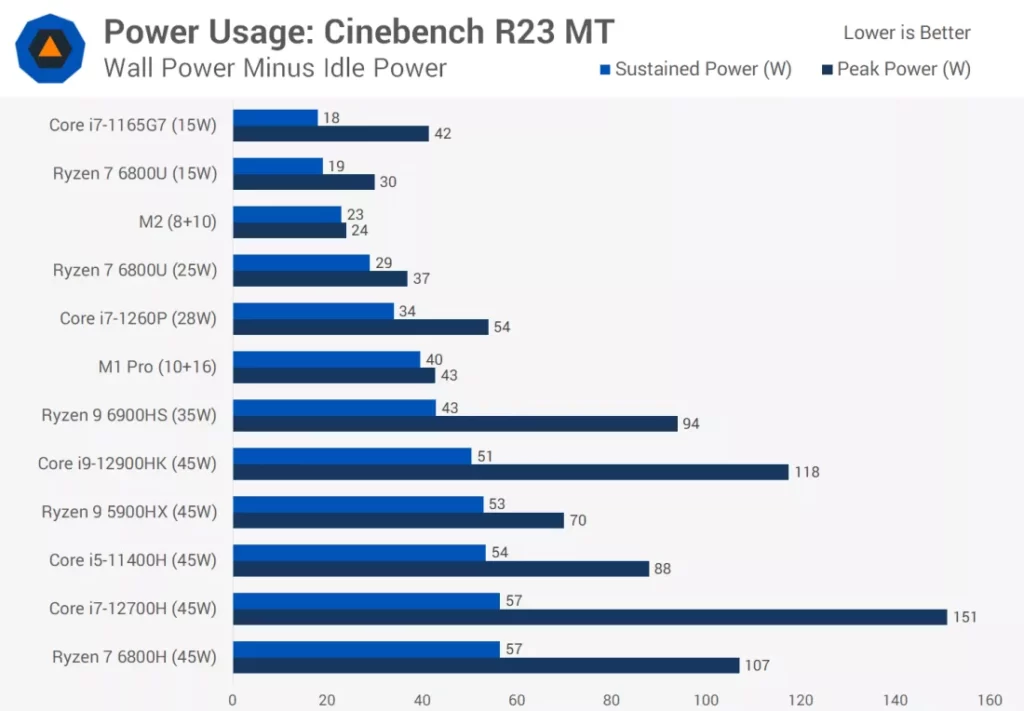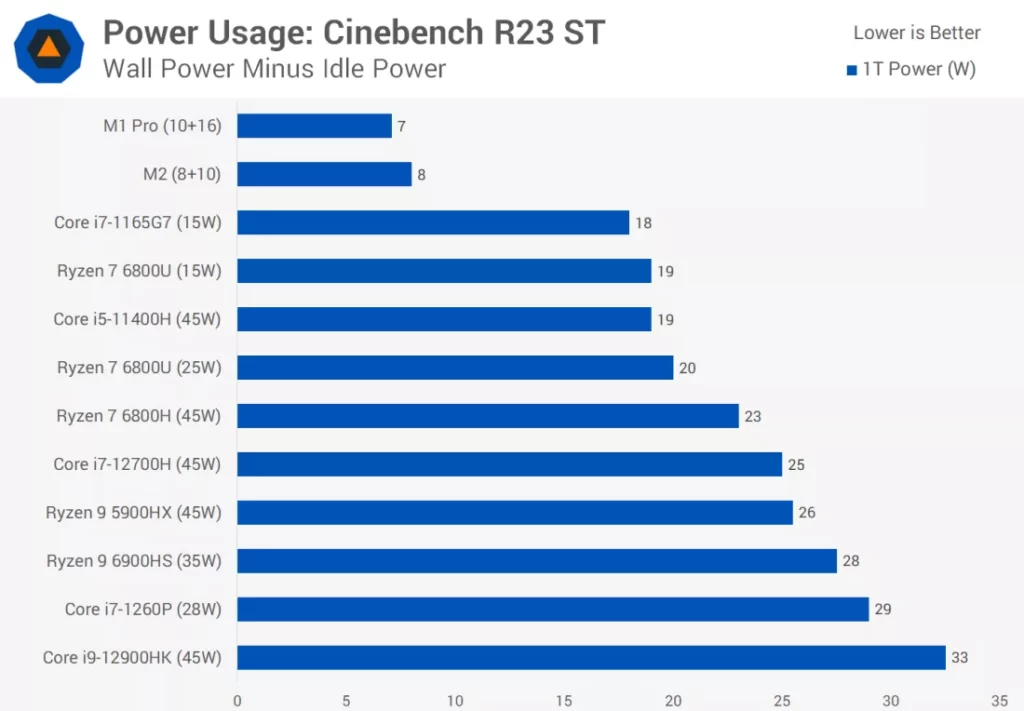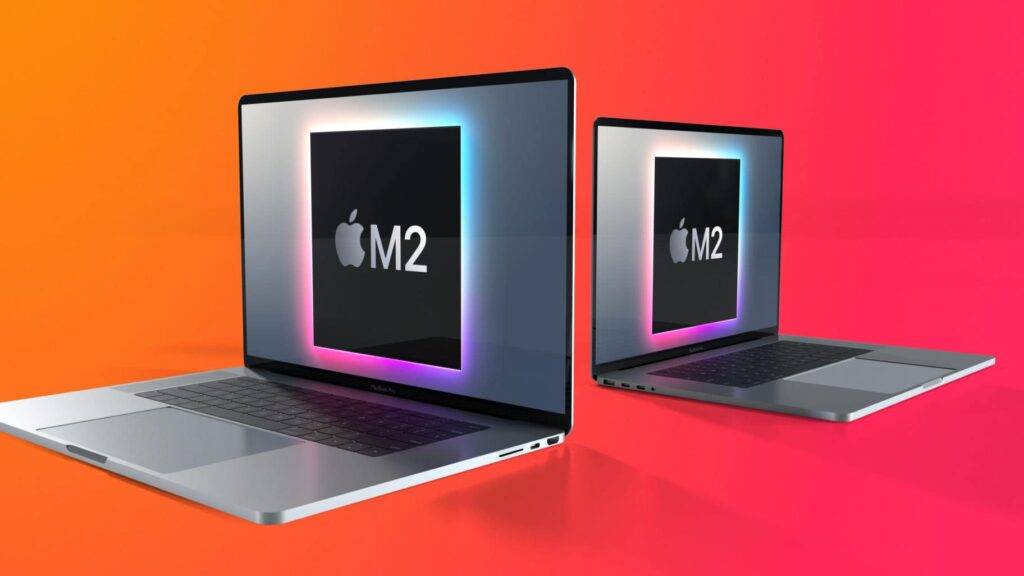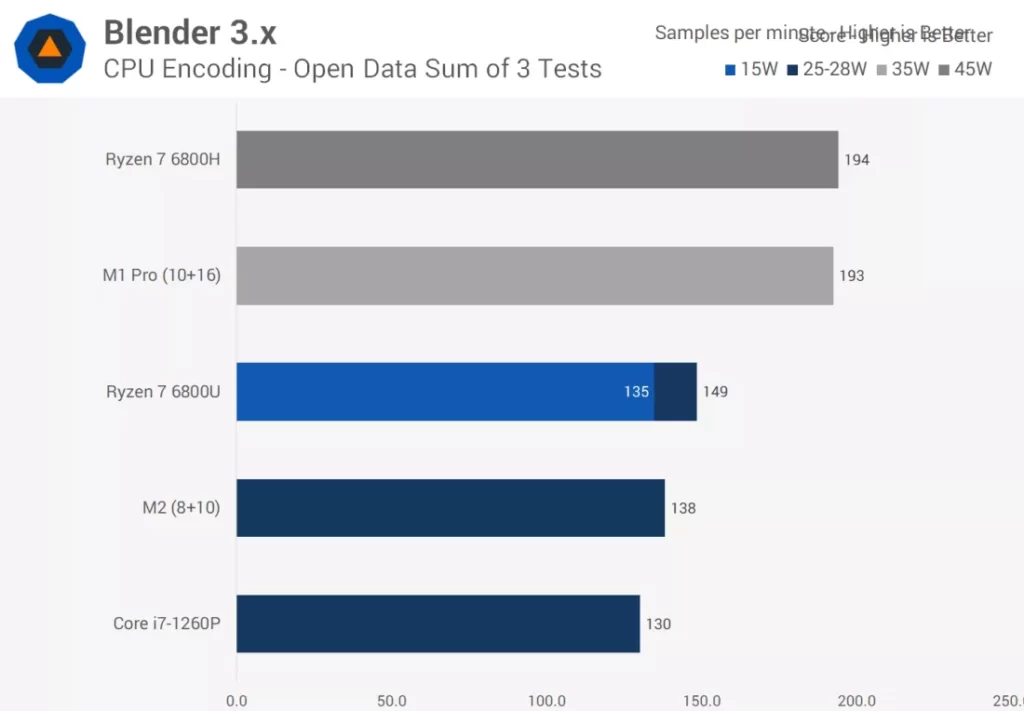The apple’s New M2 processor is being marketed as a significantly quicker SoC than its rivals, but Apple (as with most tech corporations) isn’t exactly dependable when that comes to domestic benchmarks, then we’ll have to wait and see. We’re curious in how Apple M2 works across a variety of cross-platform programs, just like we were with the M1 Pro, so that we can evaluate this to the favorite aspects present in the Windows market. In comparison, that implies PCs equipped with AMD Ryzen 7 6800U but also Intel Core i7-1260P processors.

Apple’s latest M2 SoC was initially used in the redesigned MacBook Pro 13. We’re not going to analyze the MacBook Pro 13’s qualifications as a laptop because it’s not a laptop review; we’ve seen how Apple has taken some flak for its antiquated design, and we’re not worried about that in this review.
The M2, like other Apple Silicon devices, employs the Arm architecture rather of the x86 architecture seen in the great majority of Windows PCs. The CPU has eight cores, divided into four high-performance Avalanche cores with four economical Blizzard cores in a 4+4 arrangement.
This configuration is the same as the M1, but now with updated cores, as opposed to the M1 Pro but also M1 Max, which employ more performance cores but less efficiency cores. This is due to the fact that those processors are intended for high-performance productivity computers, whereas the M2 is intended for ultraportable devices. The performance cores being clocked at 3.5 GHz, which is somewhat faster than the predecessor.
The integrated GPU comes in two flavors: one with eight GPU “cores” and one with ten GPU cores. We’re putting the 10-core variant to the test. Just on memory subsystem, it is indeed LPDDR5-6400 more than a 128-bit bus, with little above 100 GB/s at bandwidth; an advance over the M1, which utilized LPDDR4X, but lacking the LPDDR5 bandwidth of the M1 Pro and higher. Apple’s strong media engines and neural engine are both included in the M2. We find it amusing that Apple uses the same M2 designation for two fundamentally different CPUs that change in GPU configuration, as we do when this happens with other tech products. While Apple does not conceal these specifications, we believe it would be more convenient for users if the nomenclature was simplified.
We got an 13-inch MacBook Pro the with complete M2 setup for testing. We also picked 16GB of RAM to suit other systems we’ve evaluated, and a 512GB SSD because a 256GB SSD in the base configuration seems a bit crazy in 2022.
Upgrades to larger memory and storage configurations, like other Apple goods, are exorbitantly priced, and there is no user upgrade ability.
Also Read : Gigabyte gives a 54″ Gaming Monitor with Android, 4K and 120Hz
Today, we’ll compare the M2 to our current data for AMD & Intel CPUs, and that’s all energy normalized to the chips’ default TDPs. Of course, there are certain problems in testing, such as the fact that not all of the programs we benchmark are accessible on macOS. We only include multi benchmarks with such a macOS version, if it’s a native Arm variant or perhaps an x86 one simulated on Apple Silicon through Rosetta 2. At this moment, the majority of the applications we evaluate have such a native Apple Silicon versions.
This instantly adds a wildcard include that Windows or macOS versions of programs will behave slightly differently, but given the circumstances, it’s the best option available, so let’s get to test.
We’ll start with power stats because they will set the tone for the next performance testing.
Power Test Apple M2 chip
After removing the system’s idle power use, we observed 23 watts of power drain from the wall in Cinebench R23 multithreaded. This places the basic CPU packaging power between both the two Ryzen 7 6800U variants we’ve examined, at 15W or 25W. This implies that the M2 is most comparable to a 20W design whenever the CPU is substantially loaded, which is a normal amount for an ultra – portable 13-inch laptop.

The M2, like the M1 Pro, is highly outstanding in terms of how little resource it requires for single-thread workloads. While the M2 consumes slightly more power than before due to a tiny increased frequency, it still consumes significantly less power than another best option.
The effective program of the 6800U is less than half that of the Core i7-1260P, and the difference between the two is significantly wider. Because most processing nodes are better adapted for mid-3 Ghz frequency band than anything over 4.5 GHz, the fact that this Arm device only speeds up to 3.5 GHz vs 4.7 GHz for AMD & Intel chips has significant consequences for efficiency.

When we play Shadow of the Tomb Raider and then use both the CPU and GPU, the M2 uses slightly more power than when we only use the CPU actively.
The M2 is now roughly equal to the Ryzen 7 6800U operating at its maximum 25W power setting, however it still uses less power as Intel’s Core i7-1260P with 28W, and there are no difficulties with this amount of power in general. Recent laptop designs seem more than proven ability to work in the mid-20W range, and the cooling just on MacBook Pro 13 is strong enough so that the fans seldom have to activate – though we did observe the fans going at a high RPM on occasion, mainly under the hardest workloads.

Performance
Let’s get the performance testing started using Cinebench R23 multi-threading. In this task, the M2 performs admirably, matching the Core i7-1260P although operating at a far lower power level. In terms of performance and economy, the M2 is comparable to current-generation components when compared to AMD CPUs. The Ryzen 7 6800U’s power consumption and ultimate performance are both between the 15W and 25W variants. What we’re finding is that Apple could keep up with, but not outperform, today’s finest mobile CPUs.

The M2 performs admirably in the single-threaded test. A score of 1580 points outperforms the M1 Pro and also outperforms the Ryzen 7 6800U by 9%, placing its performance more in line with the Ryzen 9 6900HS. Despite the improvement in core architecture, apple M2 is still outperformed by Intel’s Alder Lake lineup, including the Core i7-1260P, which is 8% quicker in this task.

Intel does this by employing faster clock rates, which increases energy usage; as a reminder, that 1260P’s solitary power consumption is more than three times that of the M2, but AMD was not much better, needing more than double the energy for slower performance.
In Handbrake, the M2 performs poorly with CPU-based video encoding. This is a multi-threaded operation that uses AVX instruction on x86 processors, gives it an advantage against Apple’s Arm. Its Ryzen 7 6800U in 15W version is 17 percent quicker despite consuming less power, and numerous other components, like Intel’s 1260P, are also superior.

As just a refresher, this benchmark does not employ hardware-accelerated encoding; it would defeat the purpose of this test because we would not be assessing CPU performance as well as the finished product would change for each product owing to the quality variances of the each hardware encoder.
Also Read : Samsung has announced the availability of 24Gbps GDDR6 memory upcoming graphics cards.
A few individuals who commented on the M1 Pro review appeared perplexed by this, however testing hardware encoding correctly is quite difficult if you want a real comparison so because fastest encoding settings frequently differ drastically in output quality. In any event, if you wanted to conduct hardware-accelerated transcoding, we suggest DaVinci Resolve, which is consistently quicker in our testing. Using DaVinci, the most we could say would be that hardware encoder performance is comparable across CPUs, but it is dependent on the quality levels you select.

In Blender, we’ve upgraded to version 3, as well as the current Open Dataset benchmark that comes with it. That implies we’ve only evaluated a small number of processors thus far, but the CPU encoding form of the benchmark can still teach us a few things.
The M2 achieves identical results as Cinebench, despite the fact that both are now native Apple Silicon programs. The M2 is more similar to a 15W edition of a 6800U than that of the 25W version, however it surpasses the 1260P.

GPU encoding is a separate story. The M2 outperforms the 6800U in the this productivity test, coming in 41 percent quicker. AMD’s graphics have always been lacking in many productivity-related tasks, and whether it’s raw efficiency or optimisation, the M2 offers a significant edge inside the ultraportable class.
Battery
One of the most amazing parts of that same MacBook Pro 13’s efficiency is its battery life. On the a YouTube 4K playback testing in Google Chrome, the M2-powered system outlasted the next best machine, which used the Ryzen 6800U, by more than 40%. We’re utilizing per watt/hr measures here to adjust for battery size, so larger batteries don’t have a big impact on the findings.

This gives the Mac a clear advantage in battery capacity for the this test and most programs in general. It’s difficult to deny that this laptop has an excellent battery life. Also it benefits from not lowering performance of battery, which is common if using an AMD as well as Intel powered system, but this was not the situation the with MacBook, which is still another great result and indicates to its excellent efficiency when operated on battery.